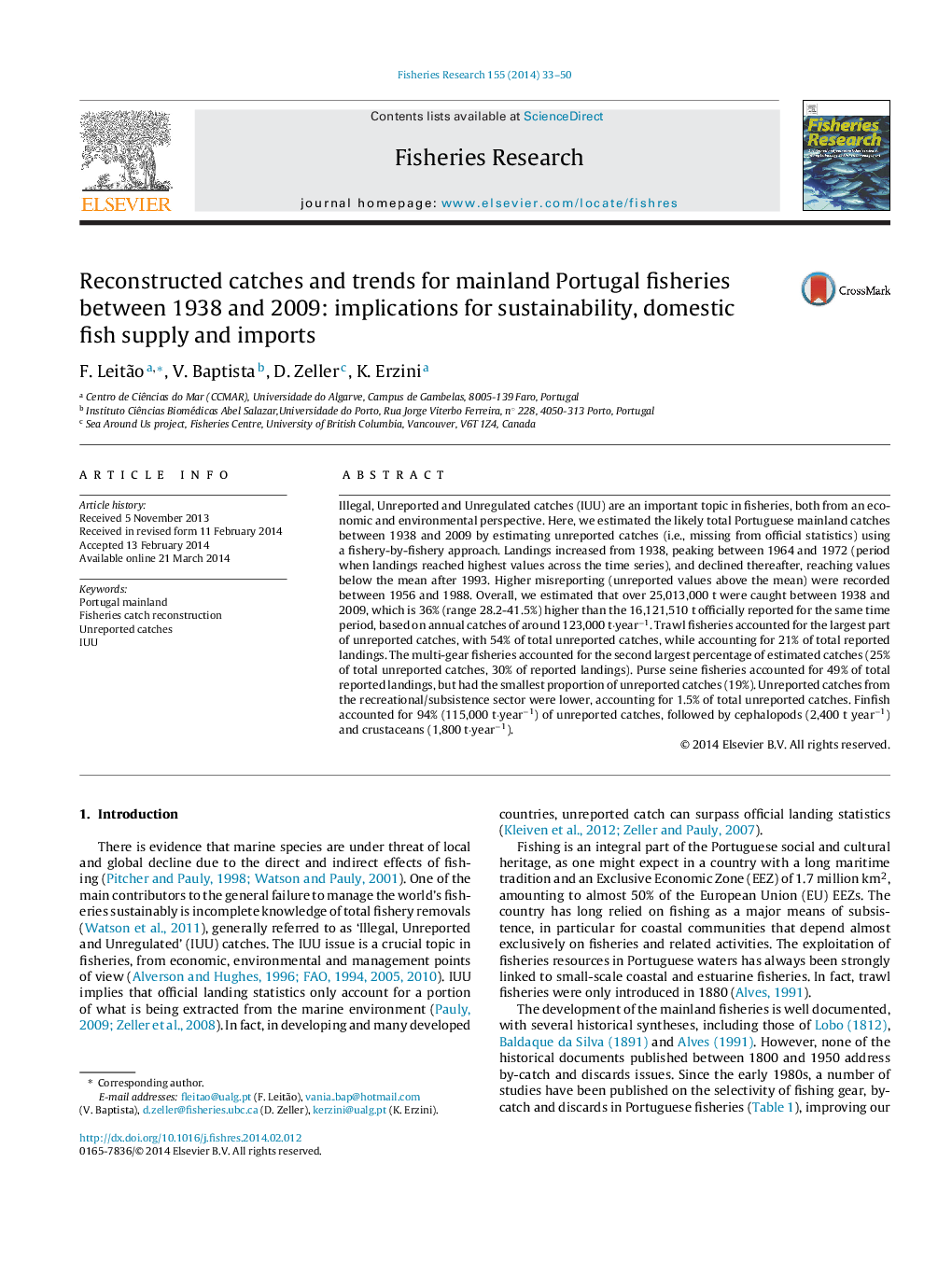| Article ID | Journal | Published Year | Pages | File Type |
|---|---|---|---|---|
| 4542945 | Fisheries Research | 2014 | 18 Pages |
•In 2013 the EU proposed no discarding ban for the new CFP.•Difference between total catches (Illegal, Unreported, Unregulated catches -IUU) and landings is significant.•Total catch is 36% higher (range 28.2-41.5%) than officially reported landings.•Trawl account for the largest part of unreported catches, followed by multi-gear and purse seine fisheries.•IUU amounts have implications for sustainability and balance of trade.
Illegal, Unreported and Unregulated catches (IUU) are an important topic in fisheries, both from an economic and environmental perspective. Here, we estimated the likely total Portuguese mainland catches between 1938 and 2009 by estimating unreported catches (i.e., missing from official statistics) using a fishery-by-fishery approach. Landings increased from 1938, peaking between 1964 and 1972 (period when landings reached highest values across the time series), and declined thereafter, reaching values below the mean after 1993. Higher misreporting (unreported values above the mean) were recorded between 1956 and 1988. Overall, we estimated that over 25,013,000 t were caught between 1938 and 2009, which is 36% (range 28.2-41.5%) higher than the 16,121,510 t officially reported for the same time period, based on annual catches of around 123,000 t·year−1. Trawl fisheries accounted for the largest part of unreported catches, with 54% of total unreported catches, while accounting for 21% of total reported landings. The multi-gear fisheries accounted for the second largest percentage of estimated catches (25% of total unreported catches, 30% of reported landings). Purse seine fisheries accounted for 49% of total reported landings, but had the smallest proportion of unreported catches (19%). Unreported catches from the recreational/subsistence sector were lower, accounting for 1.5% of total unreported catches. Finfish accounted for 94% (115,000 t·year−1) of unreported catches, followed by cephalopods (2,400 t year−1) and crustaceans (1,800 t·year−1).
